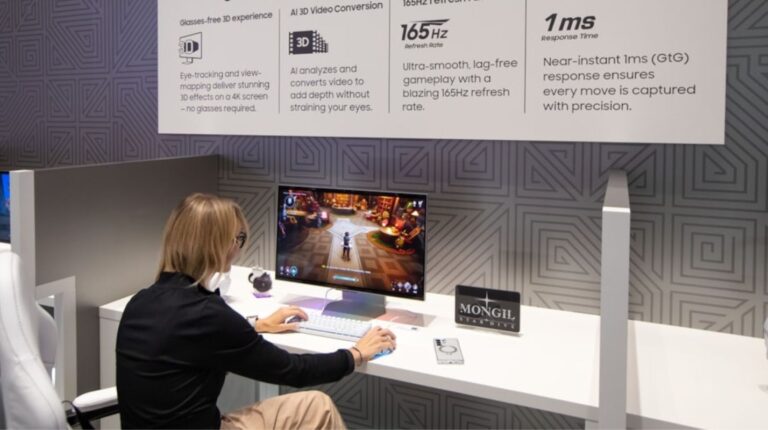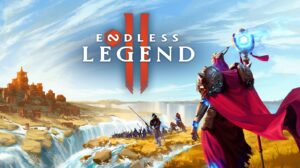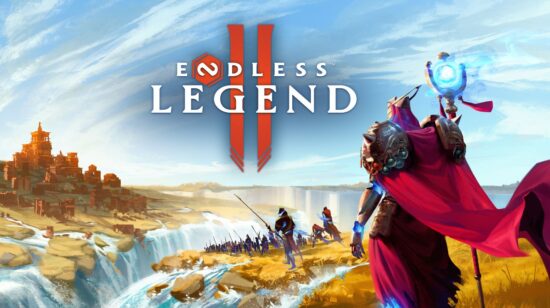Samsung And Netmarble Partner To Showcase Glasses-Free 3D RPG Gameplay


- Samsung unveiled Odyssey 3D, a glasses-free 3D gaming monitor with advanced eye tracking and view mapping
- Netmarble’s Mongil: Star Dive was optimized for Odyssey 3D, blending Unreal Engine 5 visuals with real time combat
- The monitor offers 165Hz refresh rate, 1ms response time, and high PC requirements for optimal 3D play
- Mongil: Star Dive launches globally in late 2025 on PC and mobile, with pre registration already open
Jump to:
Odyssey 3D Introduces Glasses-Free 3D Gaming
At IFA 2025, Samsung used the spotlight to debut Odyssey 3D, a gaming monitor designed to remove the awkward legacy of 3D glasses. Powered by a blend of eye tracking and view mapping technologies, the display renders depth directly to the player’s perspective, giving games a new sense of dimension without requiring extra equipment. The effect transforms a standard 4K monitor into a window that players can step through rather than stare at.
The technical specifications place Odyssey 3D firmly in high end territory. A 165Hz refresh rate and 1ms response time meet the performance standards expected in modern gaming displays, while Samsung has added a 3D conversion feature for video content through its Odyssey Hub. Converting games requires direct optimization, and the company has begun building a registry of compatible titles that can be adjusted through the Hub app.
“After a fantastic collaboration at gamescom 2025, we’re excited to continue showcasing MONGIL: STAR DIVE with Samsung at IFA,” said a Netmarble spokesperson. “We remain committed to delivering an immersive experience across Samsung devices and will continue refining the game based on player feedback ahead of launch.”
A Samsung representative added, “By working closely with Netmarble, we’ve optimized Odyssey 3D for a truly next-level experience. Players can enjoy precisely tuned depth effects across characters, environments, and action scenes, setting a new benchmark for 3D gaming.”
Hardware requirements are considerable, with NVIDIA RTX 3080 or higher recommended, as well as powerful CPUs and DDR5 memory to keep pace with rendering. Multi monitor setups also limit 3D functions, underlining that Odyssey 3D is a display intended for players who can invest in both premium hardware and premium content. The monitor starts at a hefty $1,699.99.
Odyssey 3D positions itself against the long history of failed 3D attempts in gaming, including Nintendo’s short-lived Virtual Boy and early stereoscopic TV experiments. Unlike those missteps, Samsung has placed technical performance at the center, hoping to merge spectacle with practical speed and clarity.
Mongil: Star Dive Brings Cinematic RPG Combat To 3D
Netmarble used Samsung’s booth to showcase Mongil: Star Dive, an action RPG optimized for Odyssey 3D. Visitors to IFA 2025 played a live demo that emphasized how cinematic cutscenes and combat sequences benefited from the depth effects. One attendee described battles on the monitor as feeling like stepping directly into the game’s world, a sentiment Samsung was keen to highlight.
The title is a sequel to 2013’s Monster Taming, expanding its mechanics into a real time combat system powered by Unreal Engine 5. Players control three character parties in tag based combat, while also capturing, synthesizing, and equipping monsters as companions. These systems build on the original game’s identity while aiming to compete with modern action RPG expectations.
Cutscenes, environments, and large scale battles are framed as ideal showcases for Odyssey 3D, with depth giving extra presence to character animations and visual effects. By optimizing Mongil: Star Dive for the monitor, Netmarble demonstrated how narrative driven RPGs can leverage three dimensional display technology without altering their fundamental gameplay.
Compared to genre peers, Mongil: Star Dive recalls the party based structure of Genshin Impact with its tag team combat system, while its monster taming recalls mechanics long associated with Pokémon. By combining these approaches with cinematic 3D presentation, Netmarble positioned its project as both familiar and technically forward looking.
The Technology Behind Odyssey 3D
Odyssey 3D’s technical promise lies in its combination of real time eye tracking and view mapping. By monitoring the player’s position, the display adjusts rendered perspectives to match head movement, allowing depth to remain consistent even when shifting angles. This creates the illusion of physical layers stacked within the screen, as though the game’s world is unfolding beyond its glass surface.
Samsung’s Odyssey Hub software acts as the gateway for adjusting supported titles and registering compatible games. For video content, the Hub uses AI to analyze and add depth to objects, transforming flat media into layered visuals. However, the feature is limited to specific video players and requires full screen mode, while digital rights management and HDR mode prevent conversion.
For optimal 3D performance, Samsung outlined system recommendations that reflect cutting edge PC builds: Intel i7 or Ryzen 7 CPUs, 32GB DDR5 RAM, PCIe 5.0, and an RTX 3080 or higher. The company has set expectations that Odyssey 3D is not a casual purchase but rather a flagship display for early adopters willing to push into demanding visual technology.
Placed in context, Odyssey 3D competes with ultra wide displays and high refresh esports monitors by offering something those categories cannot: a glasses-free depth effect designed for immersion rather than raw speed. It is not designed to replace traditional monitors but to complement them by carving out a premium niche.
Netmarble’s Broader Role In Gaming
Netmarble’s involvement in Odyssey 3D highlights its strategy of aligning with technological partners. Founded in Korea in 2000, the company has grown into a global publisher, backing projects across mobile, PC, and console. Its portfolio includes well known titles such as Solo Leveling: ARISE, MARVEL Future Fight, Ni no Kuni: Cross Worlds, and The Seven Deadly Sins: Grand Cross.
As the parent company of Kabam, SpinX Games, and Jam City, and a major shareholder in NCSOFT and HYBE, Netmarble has positioned itself as a versatile corporate entity capable of spanning markets. This diversification makes the company a natural partner for technology demonstrations, as it can apply its catalogue to experimental hardware without compromising its mainstream operations.
With Mongil: Star Dive set for global release in late 2025, Netmarble continues its effort to establish large scale RPGs alongside its ongoing mobile franchises. By tying its sequel to Samsung’s hardware showcase, it reinforced its dual strategy: emphasize narrative RPG growth while leveraging partnerships with major technology companies.
Where Odyssey 3D And Mongil: Star Dive Fit
Odyssey 3D and Mongil: Star Dive share a common ambition: to elevate immersion in gaming through layered visuals and cinematic presentation. Samsung’s display attempts to solve the long running problem of 3D hardware by removing glasses from the equation, while Netmarble’s RPG offers the spectacle necessary to justify the technology.
Compared to past attempts like 3DS, which used stereoscopic tricks to add depth to handheld screens, Odyssey 3D scales the concept to PC hardware while delivering refresh rates expected from competitive monitors. Mongil: Star Dive provides the action heavy content that makes the feature more than a novelty, ensuring that 3D is tied to meaningful gameplay rather than gimmicks.
Together, they illustrate a possible direction for premium displays in the gaming market. Whether Odyssey 3D will secure long term adoption depends on price, compatibility, and consumer appetite for high end 3D immersion. For now, IFA 2025 presented both monitor and game as complementary showcases of what gaming’s near future might look like.


















